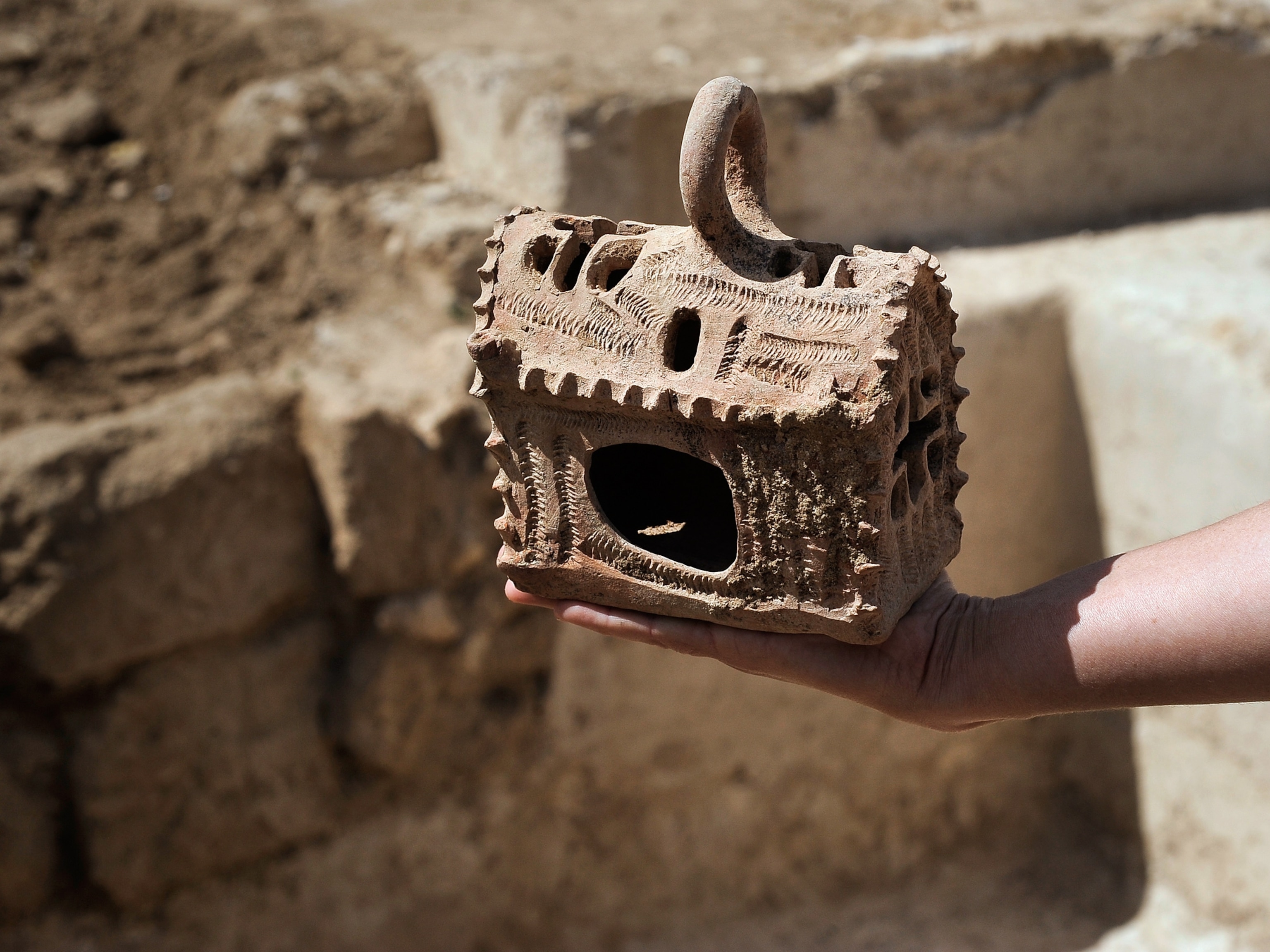
Byzantine Site in Israel Yields Church-Shaped Lantern
Intriguing artifact was unearthed near a facility for making wine.
In Israel, any turn of a spade can reveal surprising pieces of history.
That occurred recently when a large winepress from about A.D. 500, the early Byzantine era, turned up southwest of Jerusalem near the spa town of Hamei Yoav.
Archaeologists representing the Israel Antiquities Authority believe the location of the winepress, along an ancient road that led to the port of Ashkelon, would have facilitated the export of wine to Europe and North Africa.
This site was excavated before the construction of a banquet garden. The archaeologists uncovered six fermentation compartments, a large treading floor where a screw press once stood, a settling vat, and two collecting pits, all spreading across more than 100 square yards (84 square meters). These discoveries will now be incorporated into the plans for the garden.
In this same area, the archaeologists found a miniature model of a Byzantine church, about the size of a loaf of bread, indicating that the owner of the winepress was likely a Christian. The intact ceramic structure appears to be a religious lantern. Patterns cut into its roof and walls would have cast flickering crosses of light on the walls of a room. An oval opening in one end allowed an oil lamp to be placed inside.
Such miniature churches are rare finds, says Deborah Brown, the librarian for Byzantine studies at Harvard University's Dumbarton Oaks research center in Washington, D.C., but two-dimensional renderings appear in mosaics of the era.




